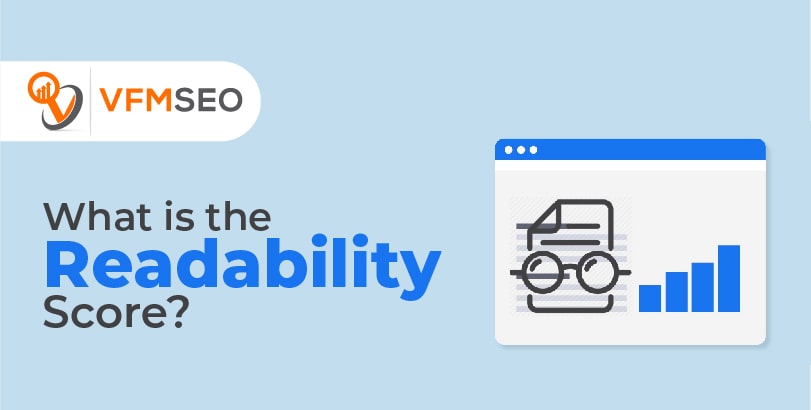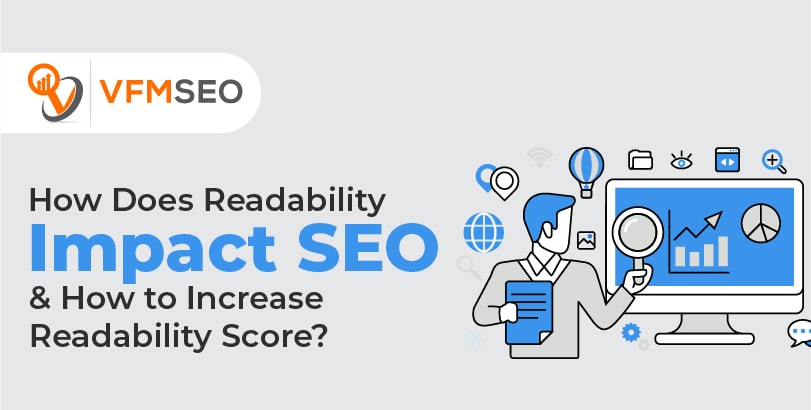
What is Readability, and How Does It Impact SEO?
Writing is, at its core, communication. If you are unable to reach your point to your audience, you fail. Regardless of how well-thought-out your argument is, how big your vocabulary, or how famous of a topic you’re making, if people have no idea what you’re talking about, it’s all for nothing.
Luckily, we can quantify that accuracy with something called your readability score. With it, you can make sure the content of your website always touches the broadest audience possible.

What is the Readability Score?
In general, its how simple to read your content is. Sounds obvious, right? But because people read at different levels, a Master’s student considered readable differs from a newcomer in high school. What’s clear to me might not be readable for you.
And if you write only to what’s readable for you without taking into account others, there will be confusion, ambiguity, and frustration around your content.

How Does Readability Impact SEO & How to Increase Readability Score?
When blogging, one circumstance that people often overlook is the readability of their content. Bloggers or content marketers will optimize their keyword density, keyword details, Meta tags, image alt tags, and hundreds of other on-page SEO. Still, they usually overlook the readability of their content.
This is apparently because content readability isn’t accounted for in Google’s search ranking algorithm, at least not that anyone knows of or could confirm. But factors like content readability are many indirect ranking factors that matter and have a significant impact on your SEO.
Why Should I Make My Content Readable And What Is Its Influence On My SEO?
There are lots of reasons to make your content readable, even though search engines do not take the score of your content’s readability into their search ranking algorithm.
This is because several of the search engine’s ranking algorithm is based on human behaviour on a page. And by improving your content readability, you strengthen their behaviour on-page, for example, their page on time, exit rate, bounce rate, social signals will all improve, and that tells search engines that people like your content.
How many times have you exited a page after reading the first few sentences because the text is just too difficult to read? Nobody likes to read complex text.
People read stuff online to get the data they want, and they want it the fastest and simplest way possible. And it is our job to make data available to them as quickly as possible.
An article with helpful content readability will make the users stay longer on the page because they will have no difficulty reading through the whole text. Consequently, it will increase the bounce rate and exit rate, which will be good for your SEO.
How Do I Improve My Content Readability?
Use short and Simple Words This is the most direct way to improve your Flesch-Kincaid readability score. There is no reason for you to use long and complicated words when there are short and straightforward.
People that go to an article are seeking data, not English lessons. The only reason you use difficult and complex words is to show off your vocabulary size, and nobody likes a show-off.
Use Short Sentences
Don’t be afraid to break long sentences into some shorter sentences. Use contractions to shorten your sentences.
Write conversationally
This is not a rule but more like a common guideline. When writing your blog posts, imagine that you’re talking to someone else in real life. You’ll notice that it’s a lot changed from how we usually write.
When you write in a conversational tone, you’ll usually use shorter and simple words, along with shorter sentences.
Typography
Besides the vocabulary and syntax of your content, the visible aspect of it is also essential. Typography has a significant impact on this. Everything from the font to the line height and line length can significantly impact your readers’ reading speed through your content.
Use Proper Formatting and Hierarchy
Don’t be afraid of hitting the enter key every time you finish writing a sentence. As stated above, there is no such thing as too much white space. So make sure you depart your sentences into paragraphs as often as you can.
Utilize headers and subheaders adequately to segment your content. You could even use tables or bullet points to organize and present your data, use text decorations to emphasize different keywords.
Use Images
You might assume that images have nothing to do with content readability, but that’s not true. Pictures can help break the monotony of only text, segment your content into several parts and make your content enjoyable.
The golden ratio of image to text is one image for every 100 words. Several studies have found that content with this ratio has the most amount of shares.
Use Transition Words
Transition words are words like “similarly, “but, “in addition to, “and “for instance. “
These words allow users to learn how ideas connect/relate to one another. Besides that, it also improves the flow of your article when reading, sequentially providing a smooth reading experience.
Transition words connect two different ideas and make it easier to read between sentences.
Conclusion
Whether content readability is a primary Google ranking factor or not remains to be seen. Still, we can know for sure that content readability does influence your search rankings in one way or another.
So do make sure that your blog has the maximum readability to anticipate your readers from exiting and leaving your page before they even read your content. Improving your content readability will not only enhance your reader’s reading experience but prove to be beneficial to your overall SEO as well.

